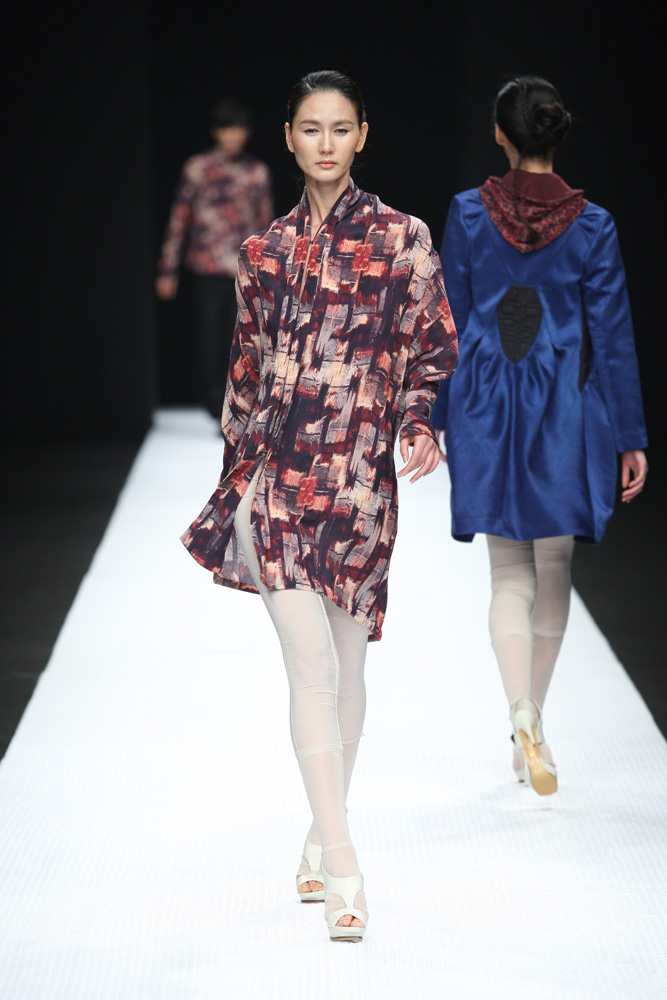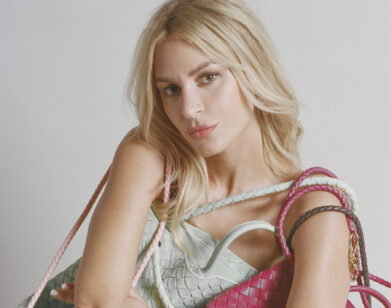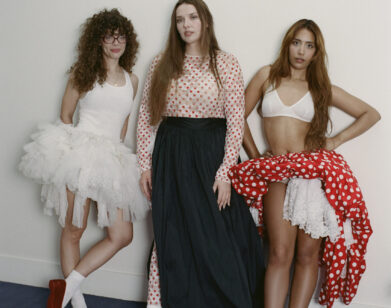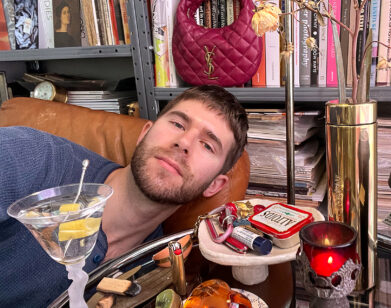Han Dynasty

“After seeing this season’s collection, friends kept telling me that that I ‘seem finally at peace,'” Han Song said on the night following his debut as the designer for the TROA line beloved by Korean and Western doyennes for strong, cheerful colors, eye-popping patterns and forgiving drapery which his mother, Troa Cho launched in 1966. “I guess,” he muses, “I was kind of a dark young man.”
While Han Song’s friends spied a new sense of serenity in his line of richly hued floral, nature-inspired prints, the forty-year-old Scarsdale-raised and Seoul-based designer is less “at peace” than he is making peace between his own gritty aesthetic and the established style associated with his mother’s line. Troa Cho started in fashion by selling needles door-to-door and taught herself to sew; consequently, there’s a palpable desire for stability and security in those classic collections. But her success is a platform for her son, who looks toward a wider range of cultural references and sensibilities.
As the designer of a small-scale experimental couture label which he showed in Paris from 2004-08 under his own name, Han Song was largely inspired by the admiration for metal, the rough dirges of Tom Waits and deeper concerns philosophical he developed while majoring in political science at NYU.
For a 2004 collection themed sci-fi, Han Song started to experiment with entirely hand-made materials. While he was designing that collection, Han also began to collaborate with interior designer Lee Eun il to develop methods of dying his own fabrics using only natural dyes. The theme for the Spring/Summer 04 collection was “space pirates”—but Galliano costume reverie it wasn’t. Instead Han took on the notions of private property and contemporary piracy. Without slipping into didactic reference, he showed fluid silver jackets with sweeping trains, crystal encrusted silver dresses and attached panels of fabric layered like the jagged cut of traditional Japanese sails. Though the collection was almost exclusively in a metallic palette, all the fabrics were hand-made and hand-dried, in a provocative blend of futurism and traditional technique.
In contrast to the experimental forms in Han Song’s couture line, his go with TROA was refined to classic shapes and cuts. Yet they retain Han’s distinctive edge. Worn with nearly sheer cream cloth leggings, the patterned hoodies and rich blue coats were pretty but irreverent. And the colours on geometric print shirt-dresses, floral and solid dyed coats and jackets were compellingly deep and earthy.
“Having grown up around her line, I know its strengths and weaknesses,” Han Song says of his mother’s style. “I took from her brand history a greater sense of volume, but I added a darker palette. I brought in blacks and greys, while keeping many of the softer hues associated with her line.” Though his current silhouette is soft and the fabrics are yielding, Han Song’s collection exemplifies nature’s sublime contradictions between beauty and disorder. As his line illustrates, nature can be beautiful but it is not necessarily pretty. As we speak, he uses a view of the Han River seen from the W’s wall-length windows juxtaposed against Seoul’s sleek cityscape to illustrate the message that sharp urban structure is at its best when off-set by nature. This is a reversal of the aesthetic that propelled the dainty and domesticated floral designs when Troa Cho founded her label. The sensibility that propelled her brand to its peak, when she had over forty stores in Korea and three in New York City, including Madison Avenue and Trump Towers, was centered in an idealized image of the natural world. At the same time synthetics were all the rage, and she used the most modern chemical dyes to make her pretty prints pop.
Han Song is part of a generation for whom natural alternatives represent ethical and aesthetic rewards. To develop natural dyes he gave up his Paris couture collection in order to devote his interests wholly in perfecting the subtle dye-process that he presents for TROA. The artisans based in the Philippines who worked with Han Song to mixing colors for his first ready-to-wear collection were accustomed to creating dyes for traditional vibrant Korean costumes, and they found his request for a deep Rubens-like black a challenge. Han refused to rely on swatches of pre-existing fabric and would bring the dye makers photographs or other images containing the colour he wanted to replicate.
“It is like making a perfume,” he says. “You need to find the right chemistry to create the perfect black, and we mix a very limited batch of dyes, so it will never be the same one season to the next.” In fact, he goes on to say, “It took a substantial and stressful amount of trial and error. There was a season when women were complaining that the dyes actually ran. They were staining their white sofas. Needless to say, it was a disaster.”
While the clothes have been cured of that complication, they are still subject to the shifts in colour that occur with natural products. “A lot of people lack understanding for how the fabrics should mature and age. People are accustomed to fabrics gradually fading over time, but the natural dyes can produce more dramatic transformations.” And with that, Han Song positions his line on the path back to the future.






